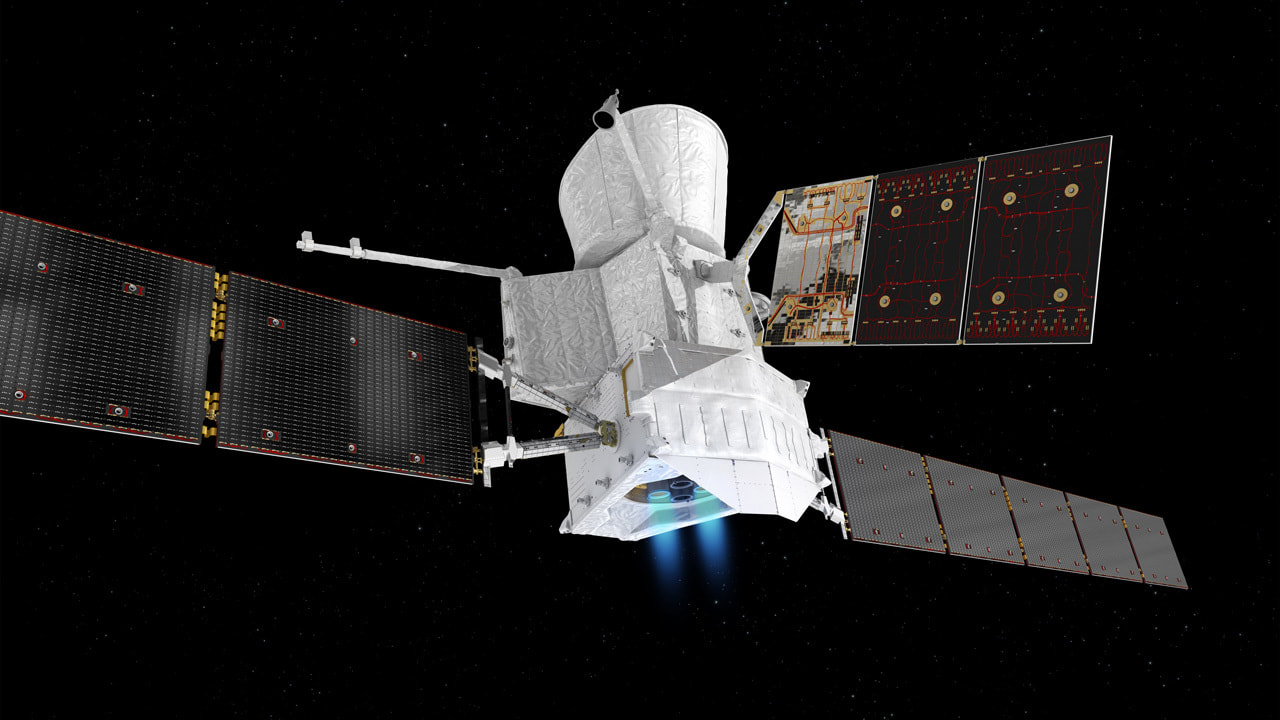|
BepiColombo is a joint mission between the European Space Agency (ESA) and the Japan Aerospace Exploration Agency (JAXA) designed to study the planet Mercury. Launched in late 2018, its complex trajectory involved a fly-by past Earth on April 10, 2020. We took advantage of the event to organise a coordinated observing campaign. The main goal was to compute and compare the observed fly-by orbit properties with the values available from the Mission Control. The method we designed could then be improved for future observation campaigns targeting natural objects that may collide our planet. The incoming trajectory of the probe limited the ground-based observability to only a few hours, around the time when it was closest to Earth. The network of telescopes we used has been developed by ESA’s NEO Coordination Centre (NEOCC) with capabilities to quickly observe imminent impactors, thus presenting similar orbits. Our team successfully acquired the target with various instruments such as the 6ROADS Chilean telescope, the 1.0 m Zadko telescope in Australia, the ISON network of telescopes, and the 1.2 m Kryoneri telescope in Corinthia, Greece. The observations were difficult due to the object’s extremely fast angular motion in the sky. At one point, the telescopes saw the probe covering twice the size of the moon in the sky each minute. This challenged the tracking capabilities and timing accuracy of the telescopes. Each telescope was moving at the predicted instantaneous speed of the target while taking images, "tracking" the spacecraft. Field stars appeared as trails, while BepiColombo itself was a point source, but only if the observation started exactly at the right moment. Because the probe was moving so fast, any date errors of the telescope images translate into position errors of the probe. To reach a precise measurement of 0.1 metres, the date of the images needed to have a precision of 100 milliseconds. The final results were condensed into two measurable quantities that could be directly compared with the Mission Control ones, the perigee distance, and the time of the probe’s closest approach to Earth. Both numbers were perfectly matched, proving our method a success: it calculated a more accurate prediction of BepiColombo’s orbit; it also provided valuable insights for future observations of objects colliding with Earth: • A purely optical observing campaign can provide trajectory information during a fly-by at sub-kilometre and sub-second levels of precision. • A similar campaign would lead to a sub-kilometre and sub-second precision for the time and location of the atmospheric entry of any colliding object. • Timing accuracy below 100 milliseconds is crucial for the closest observations. • It’s possible to organise astrometric campaigns with coverage from nearly every continent. Link to research paper: https://doi.org/10.1016/j.actaastro.2021.04.022 Written by OzGrav researcher Dr Bruce Gendre, University of Western Australia.
0 Comments
Leave a Reply. |
|
- Home
- About
-
Our People
- Chief Investigators
- Partner Investigators
- Associate Investigators
- Postdocs and Students >
- Professional & Outreach staff
- Governance Advisory Committee
- Scientific Advisory Committee
- Executive Committee
- Equity & Diversity Committee
- Early Career Researcher Committee
- Professional Development Committee
- Research Translation Committee
- OzGrav Alumni
- Research Themes
- Education and Outreach
- Events
- News/Media
- Contact Us
- Home
- About
-
Our People
- Chief Investigators
- Partner Investigators
- Associate Investigators
- Postdocs and Students >
- Professional & Outreach staff
- Governance Advisory Committee
- Scientific Advisory Committee
- Executive Committee
- Equity & Diversity Committee
- Early Career Researcher Committee
- Professional Development Committee
- Research Translation Committee
- OzGrav Alumni
- Research Themes
- Education and Outreach
- Events
- News/Media
- Contact Us


 RSS Feed
RSS Feed








